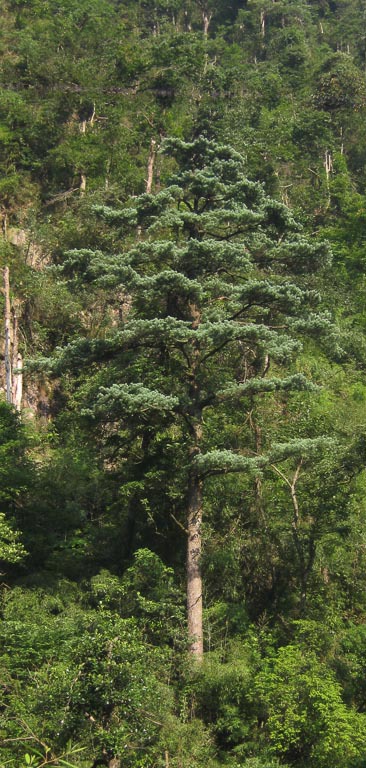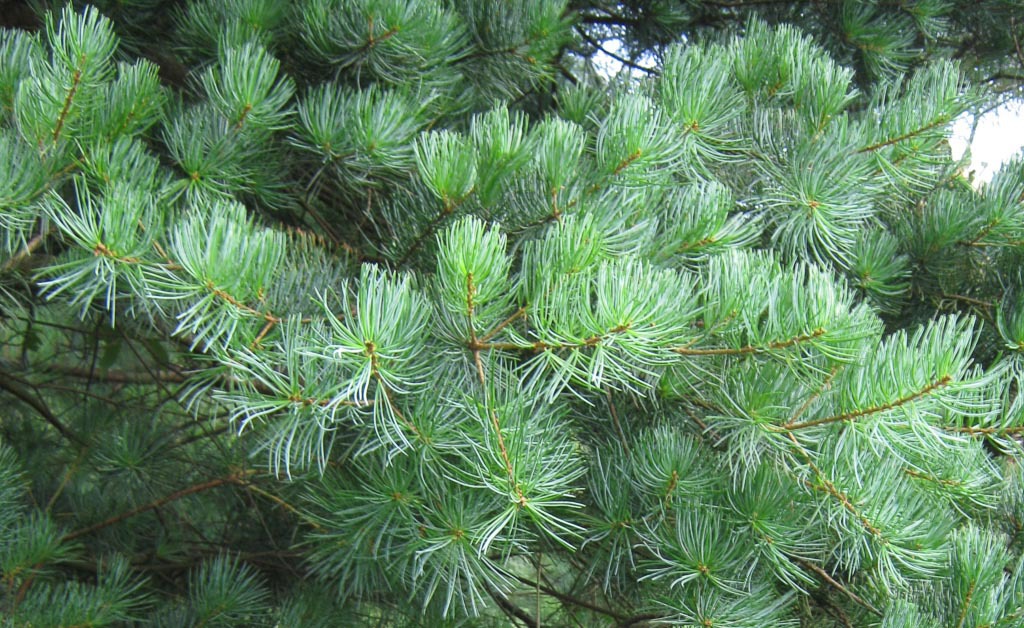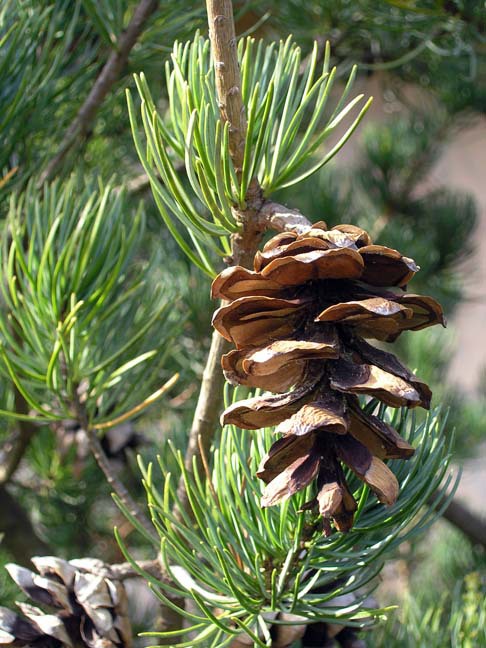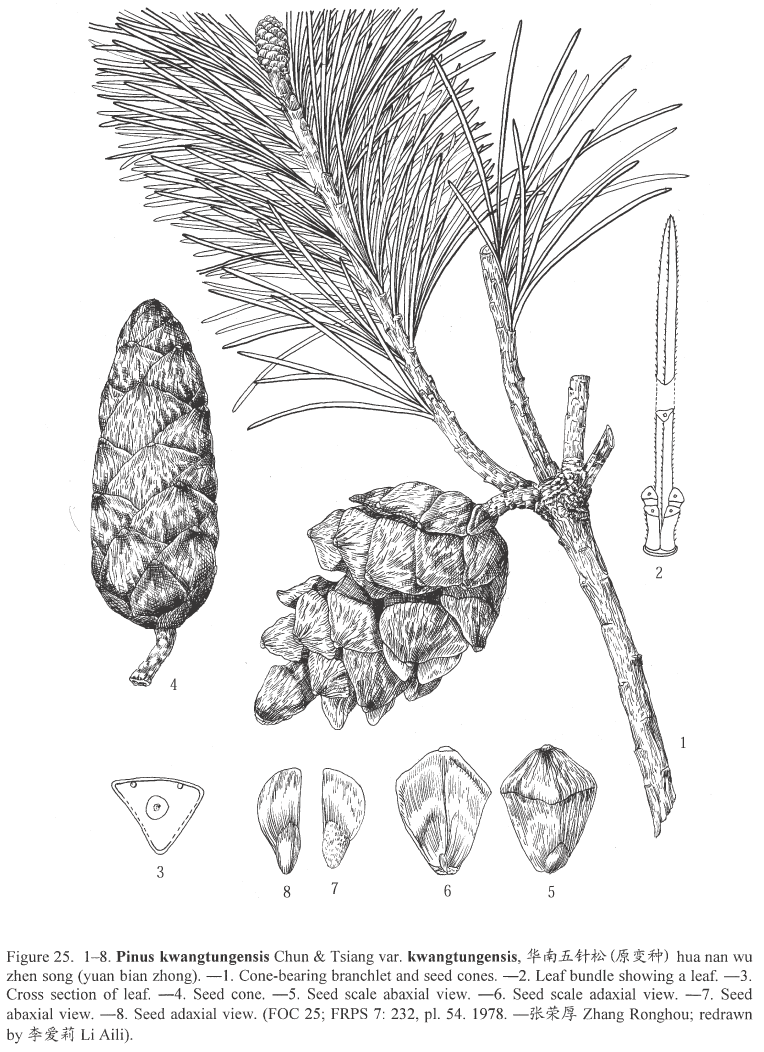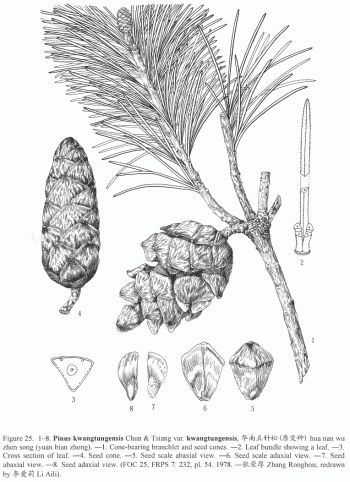
subgenus Strobus (Lemmon), section Quinquefoliae (Duhamel), subsection Strobus (Loudon).
Pinus kwantungensis, first described in 1948 by Woon Young Chun (1890-1971) et Ying Tsiang (1898-1982), is commonly known as Guangdong white pine; as well as Thông Pà cò in the Vietnamese language; and ŠŽŠ—äº”é’ˆæ¾ (huanan wuzhen song) in Chinese. The species name recognizes Guangdong province in China.
Many authors do not treat it at the species rank, preferring to lump it with either of the closely related taxa Pinus morrisonicola of Taiwan or Pinus fenzeliana of south China and Vietnam.
Ethnobotany. Timber is used by local people as good construction timber. Besides this, its oleo resin can be used as an adhesive. This is a very endangered tree species of Vietnam. Due to its confined habitats, the number of individuals is not many, and the needs in construction timber and fuel wood of the tribesmen groups may cause the species to disappear; its number being strongly reduced. Rated as a vulnerable species. We need integral protection of the species in-situ (at the existing pine groves of Pa Co). Research should also be made to create plantations of the species at its range of habitats, as supplementary measures for preservation.
Description. Hunan white pine is an evergreen coniferous species of tree that grows to mature heights of 100 feet (30 m); with a trunk up to 60 inches (150 cm) in diameter, measured at breast height.
Distribution. This species is native to China - in northern Guangdong, southwestern Guangxi, southern Guizhou, Hainan, and southern Hunan provinces, where it occurs altitudes of 1,600 to 5,200 feet (500 - 1,600 m) above sea level. It is possible that the Hainan collections actually represent the closely related P. fenzeliana.
In Vietnam, it is found in Hoa Binh (Pa Co commune, Mai Chau district) and Cao Bang (Duc Hong commune, Trung Khanh district), on limestone peaks at elevations of about 4,200 to 5,000 feet (1,300 - 1500 m) above sea level. It grows in pure stands, or mixed with Chamaecyparis hodginsii and some species of Fagaceae and Lauraceae.
Hardy to USDA Zone 9 - cold hardiness limit between 20° and 30°F (-6.6° and -1.1°C).
